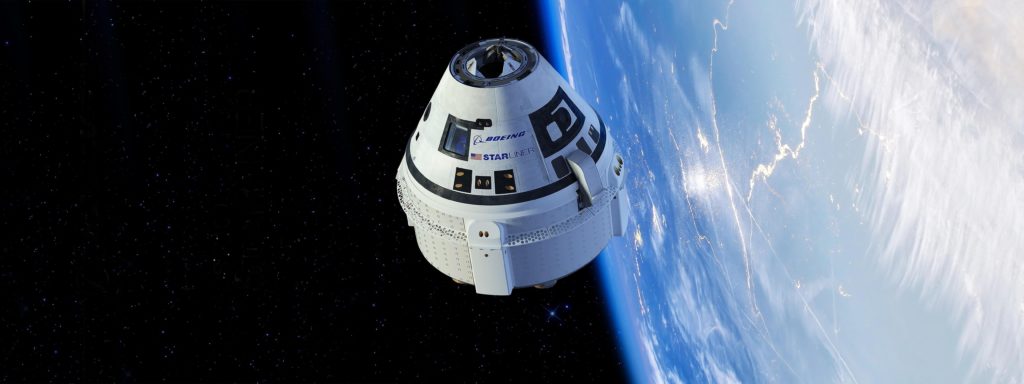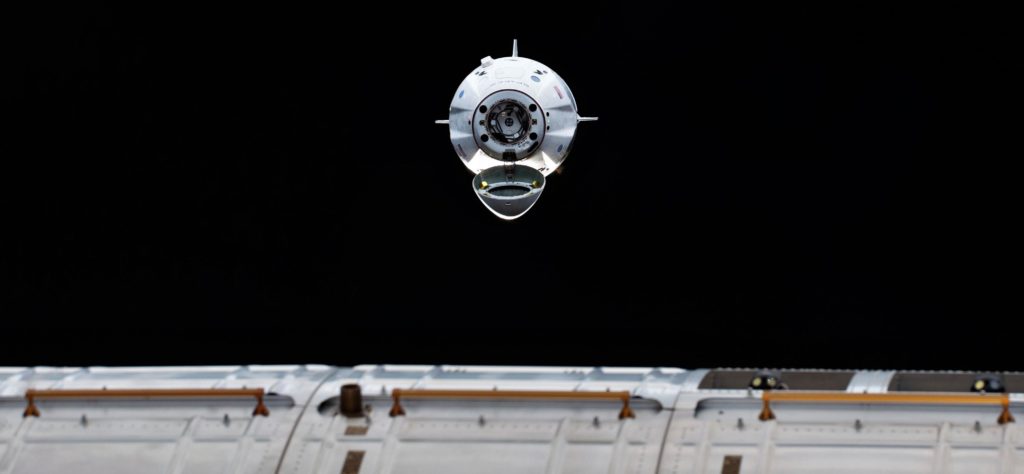

News
SpaceX fires up Falcon 9 booster destined for Crew Dragon’s astronaut launch debut
SpaceX announced that it has successfully completed a routine static fire acceptance test of the Falcon 9 booster that will eventually support Crew Dragon’s inaugural astronaut launch, expected no earlier than early 2020.
The booster in question – believed to be Falcon 9 B1058 – is very likely the first new Falcon 9 booster SpaceX has shipped to McGregor, Texas and test-fired in more than four months, an unusual lull for the typically busy launch company. If all goes according to plan, B1058 will become SpaceX’s first truly human-rated commercial rocket and will support its first human spaceflight attempt ever, a huge milestone along the company’s path to the sustainable colonization of Mars.
After multiple years of cooperative agreements and funding awards, NASA contracted with providers SpaceX and Boeing in September 2014 to deliver US astronauts to the International Space Station (ISS) on their respective Crew Dragon and Starliner spacecraft. Initially hoped to result in the first orbital launches as early as late-2017, Congress’ chronic and systematic underfunding of the Commercial Crew Program (CCP) – as well as a tinge of naive optimism in both providers – combined to delay those launch debuts by multiple years.
SpaceX performed a successful static fire of Falcon 9 B1051 – the first Crew Dragon-rated booster – on October 25th, 2018, a milestone followed more than four months later by an impressively flawless orbital debut of the next-generation spacecraft. Boeing anticipates that Starliner’s own uncrewed orbital debut could occur as early as October 2019, while Starliner’s crewed flight debut is unlikely to occur until Q1 2020.


Human spaceflight: it ain’t easy
Although Crew Dragon’s inaugural launch, orbital mission, reentry, and landing was so flawless that SpaceX’s director of mission management stated that he “[couldn’t] believe how well the whole mission has gone”, the recovered spacecraft was destroyed during a catastrophic and highly consequential explosion less than six weeks after splashdown. After a thorough three-month investigation, SpaceX and NASA announced their preliminary findings on July 15th, 2019, concluding that an exotic titanium fire most likely killed the Crew Dragon spacecraft.
Both NASA and SpaceX spokespersons were quite blunt about their opinions that it was possible – albeit highly unlikely – that Crew Dragon would be able to perform its first crewed launch before the end of 2019, a mission that was nominally planned as early as July or August 2019 prior to capsule C201’s explosion.
As such, it’s all but certain that Crew Dragon’s Demo-2 test flight will slip into early 2020, perhaps January or February barring additional delays. On a more positive note, SpaceX appears to be on track for a critical in-flight abort (IFA) test of Crew Dragon – using the spacecraft originally intended for Demo-2 – in “October or November”. Certain to be a spectacular flight one way or another, the Falcon 9 booster – believed to be B1046.4 – and upper stage set to support the test will likely be destroyed immediately after Dragon separates, smashing head-on into a veritable wall of supersonic air.
By all appearances, Falcon 9 B1058’s McGregor, TX static fire is the facility’s first booster static fire since late-April 2019, an extremely rare lull for a company that averaged the completion of almost one new booster per month in 2018. This can likely be explained in large part by the spectacular success of SpaceX’s highly-reusable Falcon 9 Block 5 upgrade.
Check out Teslarati’s Marketplace! We offer Tesla accessories, including for the Tesla Cybertruck and Tesla Model 3.

News
Tesla (TSLA) receives “Buy” rating and $551 PT from Canaccord Genuity
He also maintained a “Buy” rating for TSLA stock over the company’s improving long-term outlook, which is driven by autonomy and robotics.

Canaccord Genuity analyst George Gianarikas raised his Tesla (NASDAQ:TSLA) price target from $482 to $551. He also maintained a “Buy” rating for TSLA stock over the company’s improving long-term outlook, which is driven by autonomy and robotics.
The analyst’s updated note
Gianarikas lowered his 4Q25 delivery estimates but pointed to several positive factors in the Tesla story. He noted that EV adoption in emerging markets is gaining pace, and progress in FSD and the Robotaxi rollout in 2026 represent major upside drivers. Further progress in the Optimus program next year could also add more momentum for the electric vehicle maker.
“Overall, yes, 4Q25 delivery expectations are being revised lower. However, the reset in the US EV market is laying the groundwork for a more durable and attractive long-term demand environment.
“At the same time, EV penetration in emerging markets is accelerating, reinforcing Tesla’s potential multi‑year growth runway beyond the US. Global progress in FSD and the anticipated rollout of a larger robotaxi fleet in 2026 are increasingly important components of the Tesla equity story and could provide sentiment tailwinds,” the analyst wrote.
Tesla’s busy 2026
The upcoming year would be a busy one for Tesla, considering the company’s plans and targets. The autonomous two-seat Cybercab has been confirmed to start production sometime in Q2 2026, as per Elon Musk during the 2025 Annual Shareholder Meeting.
Apart from this, Tesla is also expected to unveil the next-generation Roadster on April 1, 2026. Tesla is also expected to start high-volume production of the Tesla Semi in Nevada next year.
Apart from vehicle launches, Tesla has expressed its intentions to significantly ramp the rollout of FSD to several regions worldwide, such as Europe. Plans are also underway to launch more Robotaxi networks in several more key areas across the United States.
News
Waymo sues Santa Monica over order to halt overnight charging sessions
In its complaint, Waymo argued that its self-driving cars’ operations do not constitute a public nuisance, and compliance with the city’s order would cause the company irreparable harm.

Waymo has filed a lawsuit against the City of Santa Monica in Los Angeles County Superior Court, seeking to block an order that requires the company to cease overnight charging at two facilities.
In its complaint, Waymo argued that its self-driving cars’ operations do not constitute a public nuisance, and compliance with the city’s order would cause the company irreparable harm.
Nuisance claims
As noted in a report from the Los Angeles Times, Waymo’s two charging sites at Euclid Street and Broadway have operated for about a year, supporting the company’s growing fleet with round-the-clock activity. Unfortunately, this has also resulted in residents in the area reportedly being unable to sleep due to incessant beeping from self-driving taxis that are moving in and out of the charging stations around the clock.
Frustrated residents have protested against the Waymos by blocking the vehicles’ paths, placing cones, and “stacking” cars to create backups. This has also resulted in multiple calls to the police.
Last month, the city issued an order to Waymo and its charging partner, Voltera, to cease overnight operations at the charging locations, stating that the self-driving vehicles’ activities at night were a public nuisance. A December 15 meeting yielded no agreement on mitigations like software rerouting. Waymo proposed changes, but the city reportedly insisted that nothing would satisfy the irate residents.
“We are disappointed that the City has chosen an adversarial path over a collaborative one. The City’s position has been to insist that no actions taken or proposed by Waymo would satisfy the complaining neighbors and therefore must be deemed insufficient,” a Waymo spokesperson stated.
Waymo pushes back
In its legal complaint, Waymo stated that its “activities at the Broadway Facilities do not constitute a public nuisance.” The company also noted that it “faces imminent and irreparable harm to its operations, employees, and customers” from the city’s order. The suit also stated that the city was fully aware that the Voltera charging sites would be operating around the clock to support Waymo’s self-driving taxis.
The company highlighted over one million trips in Santa Monica since launch, with more than 50,000 rides starting or ending there in November alone. Waymo also criticized the city for adopting a contentious strategy against businesses.
“The City of Santa Monica’s recent actions are inconsistent with its stated goal of attracting investment. At a time when the City faces a serious fiscal crisis, officials are choosing to obstruct properly permitted investment rather than fostering a ‘ready for business’ environment,” Waymo stated.
News
Tesla FSD v14.2.2 is getting rave reviews from drivers
So far, early testers have reported buttery-smooth drives with confident performance, even at night or on twisty roads.

Tesla Full Self-Driving (Supervised) v14.2.2 is receiving positive reviews from owners, with several drivers praising the build’s lack of hesitation during lane changes and its smoother decision-making, among others.
The update, which started rolling out on Monday, also adds features like dynamic arrival pin adjustment. So far, early testers have reported buttery-smooth drives with confident performance, even at night or on twisty roads.
Owners highlight major improvements
Longtime Tesla owner and FSD user @BLKMDL3 shared a detailed 10-hour impression of FSD v14.2.2, noting that the system exhibited “zero lane change hesitation” and “extremely refined” lane choices. He praised Mad Max mode’s performance, stellar parking in locations including ticket dispensers, and impressive canyon runs even in dark conditions.
Fellow FSD user Dan Burkland reported an hour of FSD v14.2.2’s nighttime driving with “zero hesitations” and “buttery smooth” confidence reminiscent of Robotaxi rides in areas such as Austin, Texas. Veteran FSD user Whole Mars Catalog also demonstrated voice navigation via Grok, while Tesla owner Devin Olsen completed a nearly two-hour drive with FSD v14.2.2 in heavy traffic and rain with strong performance.
Closer to unsupervised
FSD has been receiving rave reviews, even from Tesla’s competitors. Xpeng CEO He Xiaopeng, for one, offered fresh praise for FSD v14.2 after visiting Silicon Valley. Following extended test drives of Tesla vehicles running the latest FSD software, He stated that the system has made major strides, reinforcing his view that Tesla’s approach to autonomy is indeed the proper path towards autonomy.
According to He, Tesla’s FSD has evolved from a smooth Level 2 advanced driver assistance system into what he described as a “near-Level 4” experience in terms of capabilities. While acknowledging that areas of improvement are still present, the Xpeng CEO stated that FSD’s current iteration significantly surpasses last year’s capabilities. He also reiterated his belief that Tesla’s strategy of using the same autonomous software and hardware architecture across private vehicles and robotaxis is the right long-term approach, as it would allow users to bypass intermediate autonomy stages and move closer to Level 4 functionality.








